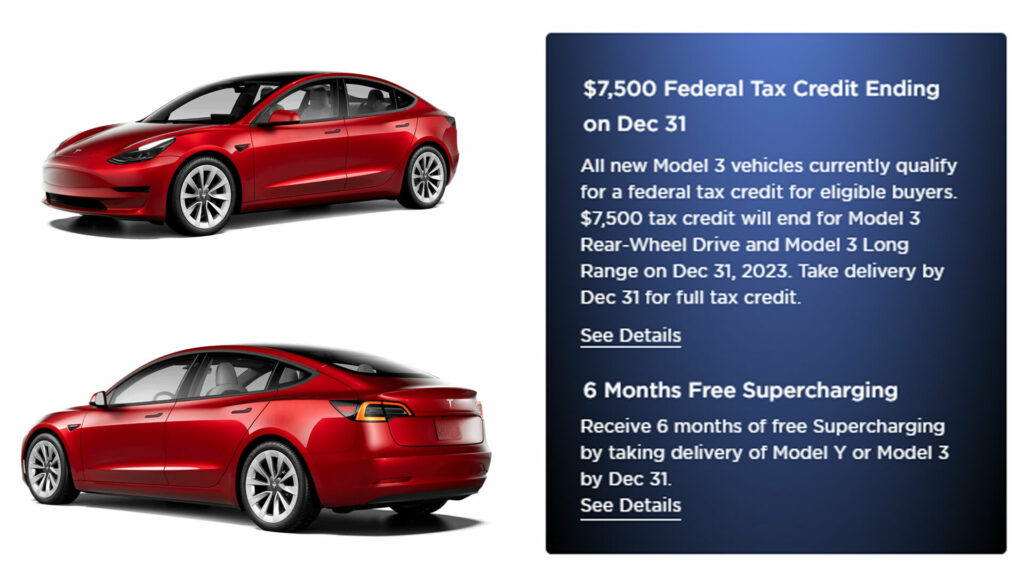The Model 3 RWD and Model 3 Long Range will no longer qualify for federal incentives next year

Earlier this month, Tesla announced the federal tax credit for the Model 3 RWD and Model 3 Long Range would be cut in half on January 1st. The company has now revealed both models will lose the credit altogether.
In a brief social media post, the automaker said the “$7,500 EV tax credit will end entirely for Model 3 RWD & Long Range delivered after 12/31.” The company went on to suggest customers act quick and choose a vehicle from existing inventory to ensure they’ll get the sizable discount.
In a note on their website, Tesla said the change was “based on [their] current view of new IRA guidance.” As you’re likely aware, a number of changes will go into effect next year and not all of them are good.
advertisement scroll to continue
More: Ford Warns Dealers Mustang Mach-E Unlikely To Qualify For EV Tax Credits In January
While tax credits are slated to become available at the point of sale, strict sourcing and production requirements will also come into effect. The rules may sound relatively straightforward, but they’re complicated and some automakers have been reluctant to talk about whether or not they’ll qualify for tax credits as they weren’t entirely sure themselves. This seems to have been the case with Tesla as they originally thought the models would qualify for a partial credit, but apparently not.
This is a significant blow as the rear-wheel drive Model 3 starts at $38,990 and the tax credit effectively knocks the price down to $31,490. That’s relatively affordable and this has undoubtedly helped to fuel the car’s success.
The Model 3 Long Range begins at $45,990 and drops to $38,490 after the credit, which is a great price for an all-wheel drive EV with 333 miles (536 km) of range.
Tesla isn’t the only automaker being impacted by the changes as a number of other models will see their credit cut or eliminated entirely. It’s also important to note some Tesla vehicles will continue to qualify for federal incentives, although they’re more expensive to begin with.



